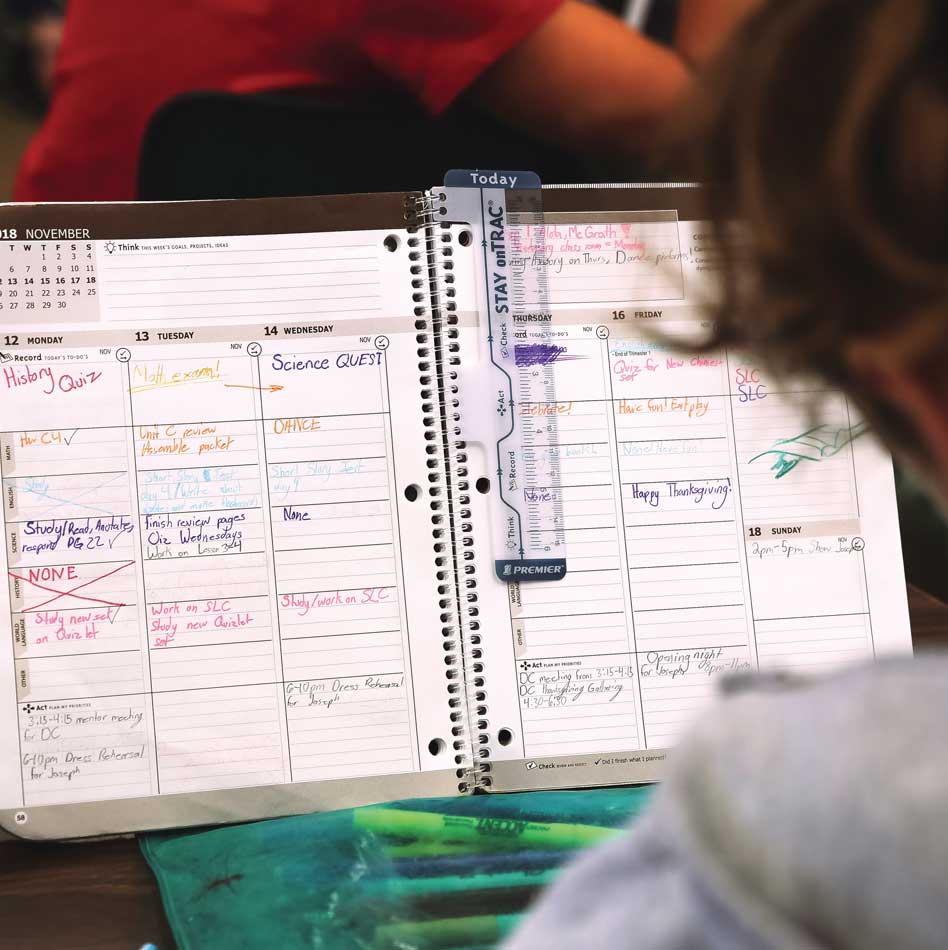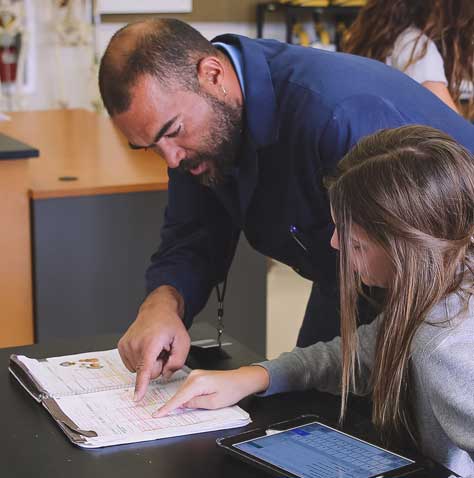



At Middle School orientation in late August, just before the school year begins, students in Grades 6, 7, and 8 are handed a curious coil-bound paperback book dubbed the Middle School planner. To the youngest students, this book, which somewhat resembles a calendar, seems unusual. To returning students in Grades 7 and 8, it is known all too well. Having experienced firsthand the weekly planning time in advisory class and the random planner checks, they know exactly what to do.
As adults, most of us have a time-management system that helps us to juggle the multitude of tasks, appointments, and events that fill our days. We realize that managing our time is really about managing our priorities. Students in Parker’s Middle School have the chance to develop an approach to time management while they are young—a skill that will benefit them far beyond their school years.
Beginning in Lower School, Parker students are introduced to weekly assignment sheets and learn to fill in what the teacher assigns for homework each day. This is the first step they take to become responsible for their assignments and organized with their homework. When they are promoted to Middle School, the number of things they need to keep track of expands dramatically: Instead of having one teacher for all of their academic subjects, they have a different teacher for each. Suddenly, there is a demand for a unifying tool to help students stay organized and on top of their workload. Enter the Middle School planner.
At the start of each week in advisory class, all Middle School students dedicate time to looking at the week ahead. Students fill in the pages of the planner to track their classwork, homework, project work, and study time for each academic subject. They then note any extracurricular activities they might have, from club meetings to sports practices, and they make space for fun. Advisors suggest that students write in birthdays, plans with friends, and events with family, teaching them that for the planner to do its job, it needs to include everything.
Middle School teacher and Grade 6 Dean Chris McGrath explains that when students embrace the process and write down all of their activities, they can step back and say, “I’m looking at my whole week here.” It’s like journaling—with an eye toward productivity. Once students complete their weekly plan, Chris encourages them to share it with their parents, which he says often leads to good family conversations.
As those newest to the concept, Grade 6 students receive extra guidance from their advisors when filling out their planners. “It starts out a bit scripted,” Chris explains. “We are teaching them to be efficient and to make a planner that is truly useful to them. We want them to learn to trust the tool and begin to form good habits.” By the end of the first trimester of classes, students have the process down. “We give gentle nudges,” Chris adds, “but they end up really embracing it.”
In Grades 7 and 8, the process of planning a week is routine for the students. Some may feel they can remember on their own everything that they need to do, but it only takes one missed assignment to drive home the power of the planner. The work in Grades 7 and 8 is about making the planner their own: Students come up with their own codes and abbreviations for recurring tasks, and they devise personalized color-coding systems that work for them.
Middle School teacher and Grade 8 advisor DJ Walcott, affectionately known around Campus as “the man with a plan,” developed a curriculum for Grade 8 that helps busy students to succeed in managing their workload. “To be successful, people plan,” DJ says. The curriculum provides students with a process they can rely on to map out their responsibilities, fostering a sense of confidence that they have the time to complete their work. DJ’s method also gives students an opportunity to identify any conflicts in advance, which further reduces their stress.
“A lot of Parker kids are over-scheduled with academics, clubs, athletics, and activities outside of school,” DJ says. “When they get older, and the social aspect begins to kick in, it affects their plan.” He tries to impart to his students that the true value of a well-thought-out plan is that it protects their time for the things they really want to pursue.
At Parker, just like at other rigorous college-preparatory schools across the country, students have to find a balance of time for homework, studying, activities, and spending time with the people who matter most to them. The Middle School planner demonstrates that with forethought and the right tool for the job, students can own their schedule and take command of the constellation of responsibilities and opportunities around them.

We are teaching them to be efficient and to make a planner that is truly useful to them. We want them to learn to trust the tool and begin to form good habits.
Left: Plan for the Week poster created by Middle School teacher DJ Walcott.
This article first appeared in the fall 2018 issue of Parker Magazine. Click here to read the issue.




